 The Leonard Lopate Show
The Leonard Lopate Show
Photojournalists on Covering the War in Iraq
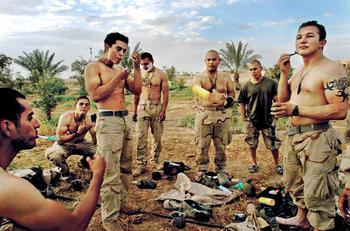
As the regime of Saddam Hussein fell across Iraq, soldiers and civilians pillaged his palaces across the country, revealing luxurious accommodations and major weapons caches.
From Photojournalists on War, by Michael Kamber, published by University of Texas Press.
(Photo by Lynsey Addario)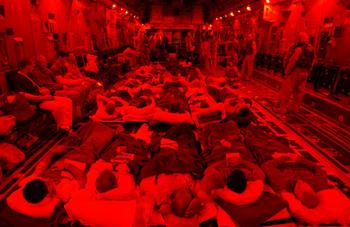
The interior lights of the plane are red because of an “alarm red” attack, which indicates that the base is under attack, usually by incoming mortar rounds.
From Photojournalists on War, by Michael Kamber, published by University of Texas Press.
(Lynsey Addario/Corbis)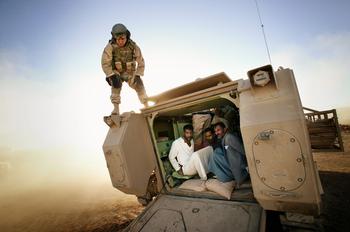
Soldiers from the 3rd Armored Cavalry Regiment and Iraqi soldiers moved into Tal Afar with Bradleys, tanks, and Humvees. Helicopters provided air support as the soldiers searched houses and detained suspects.
From Photojournalists on War, by Michael Kamber, published by University of Texas Press.
(Photo by Christoph Bangert)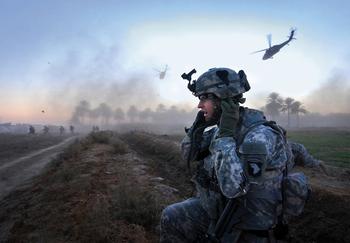
The soldiers detained ten suspected al-Qaeda conspirators and seized weapons and bomb-making supplies.
From Photojournalists on War, by Michael Kamber, published by University of Texas Press.
(Photo by Ben Brody)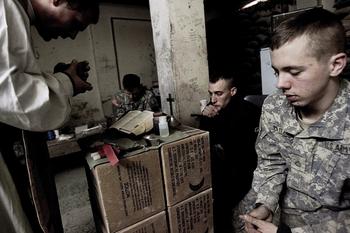
From Photojournalists on War, by Michael Kamber, published by University of Texas Press.
(Photo by Guy Calaf)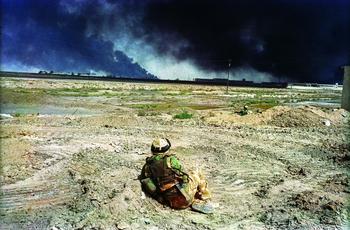
The burning building on the right, a technical college, was repeatedly shelled by British forces in response to Iraqi sniper attacks.
From Photojournalists on War, by Michael Kamber, published by University of Texas Press.
(Photo by Alan Chin)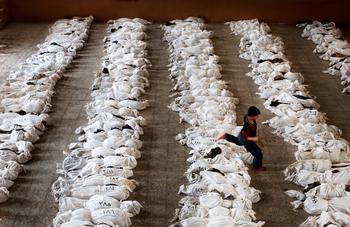
The bodies had been brought to this school for identification by family members who searched for identity cards and other clues among the skeletons to identify missing family members. The victims were killed by Saddam Hussein’s government during a Shi’ite uprising here following the 1991 Gulf War.
From Photojournalists on War, by Michael Kamber, published by University of Texas Press.
(Marco Di Lauro/Getty Images)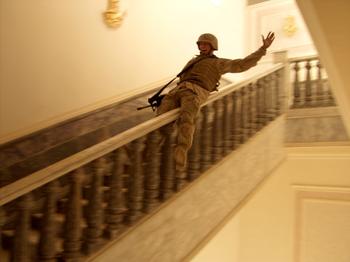
The residence contained carpets worth hundreds of thousands of dollars and at least one golden toilet. Tikrit was the last major city to fall to Allied forces during the invasion and, despite fighting that continued throughout Iraq, Marines celebrated victory.
From Photojournalists on War, by Michael Kamber, published by University of Texas Press.
(Photo by Ashley Gilbertson/VII)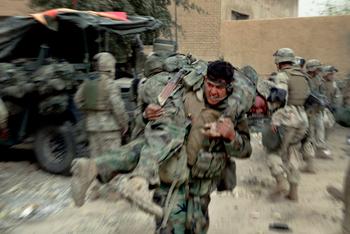
From Photojournalists on War, by Michael Kamber, published by University of Texas Press.
(Gary Knight/VII)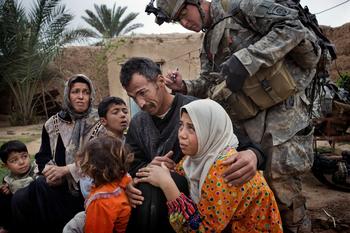
Lt Col. Andrew Poppas of the 73rd Calvary, 82nd Airborne Division, said the numbering system allowed troops to determine if people were moving around the village of Qubah despite a lockdown following a US attack on insurgents.
From Photojournalists on War, by Michael Kamber, published by University of Texas Press.
(Photo by Yuri Kozyrev/NOOR)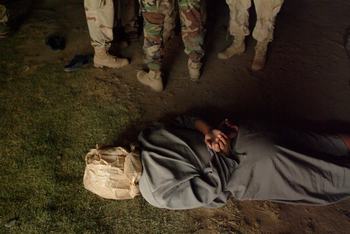
He lies waiting on the lawn of a neighbor's house while the soldiers discuss their next move.
From Photojournalists on War, by Michael Kamber, published by University of Texas Press.
(Photo by Rita Leistner)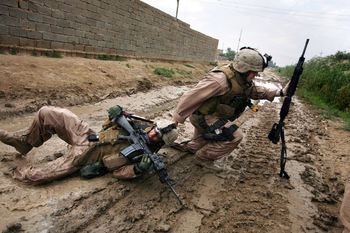
Valdez was shot through the arm and right torso but survived.
From Photojournalists on War, by Michael Kamber, published by University of Texas Press.
(João Silva/The New York Times)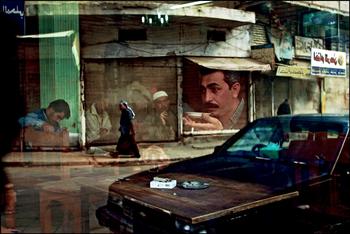
Cafes are a trademark of this ancient city, gathering places where men play dominos, blackjack and socialize. Photo by Bruno Stevens
From Photojournalists on War, by Michael Kamber, published by University of Texas Press.
(Photo by Bruno Stevens)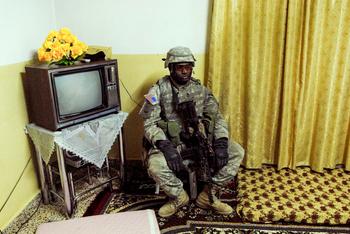
From Photojournalists on War, by Michael Kamber, published by University of Texas Press.
(Peter van Agtmael/Magnum Photos)